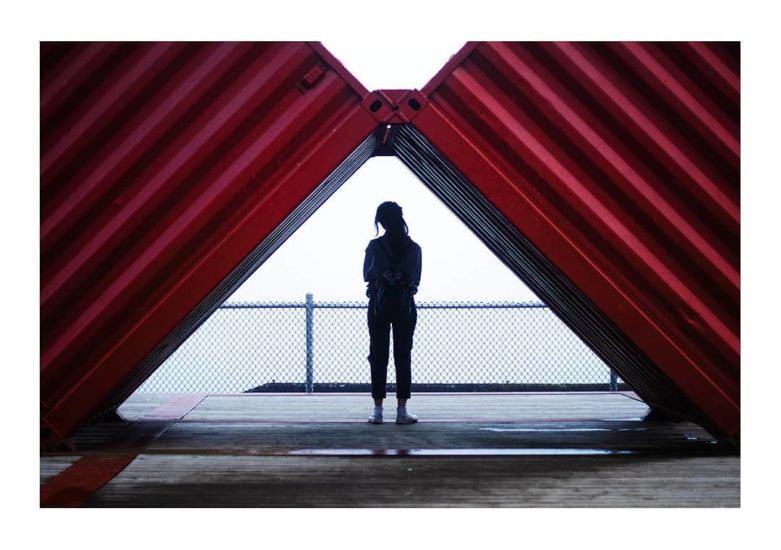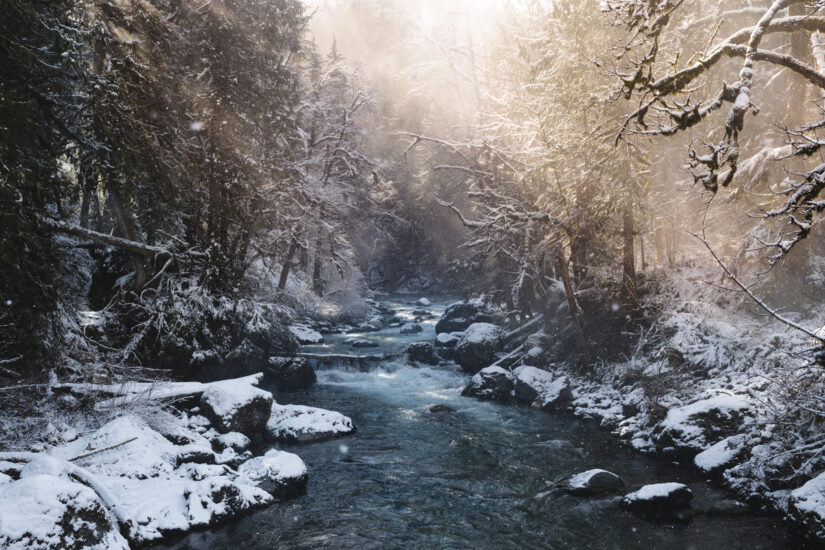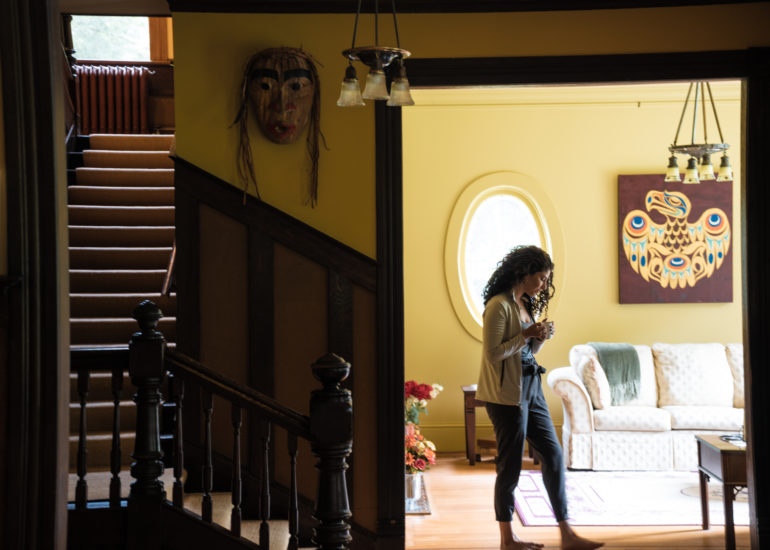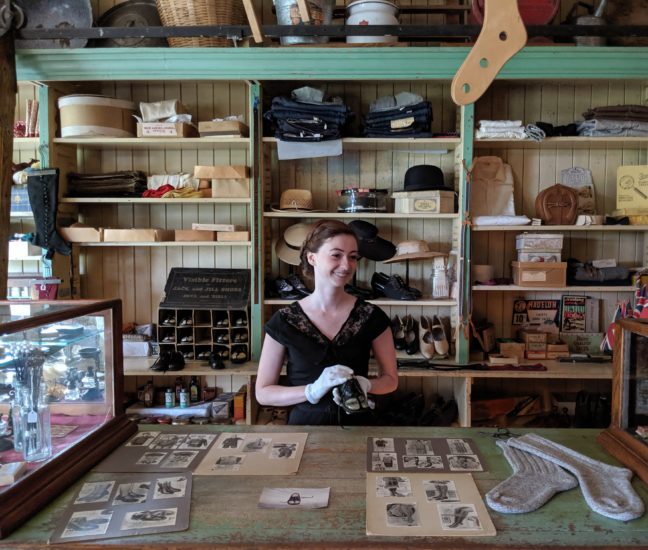Travel Info
- Routes
- Follow Highway 1 or Scenic 7
- Distance
- ~ 140 km / 87 miles (2 hours direct driving)
- Suggested Trip Time
- 1-2 Days
Stops on this Leg of the Gold Rush Trail
Into the Mouth of the Mighty River
Stretching over 1,375 km/854 mi from Fraser Pass in the Rocky Mountains to the Pacific Coast, the Fraser is the longest river in British Columbia. Designated a Canadian Heritage River for its natural and human heritage values, much of our provincial history has been bound to the Fraser. The Fraser corridor is home to the first recorded settlements of Indigenous people, including the Musqueam, Sto:lo, St’at’imc, Secwepemc and Nlaka’pamux. It was an essential historic route between the Interior and southern coast and was the primary route of prospectors during the Gold Rush and still today is an important route for transport and commerce. In 1857, gold was discovered in the Fraser River, and in the spring of 1858, James Douglas sent 800 ounces of gold to the San Francisco Mint knowing what word of the gold’s arrival would trigger. As the initial flood of prospectors arrived in BC they completely bypassed all of the lower mainland locations except for New Westminster (once the Royal Engineers laid it out), Fort Langley and Port Douglas (Harrison lake). By late spring of 1858, within weeks of the first ship arriving in Victoria, thousands made the journey up the Fraser River and into the interior of British Columbia searching for gold. Prospectors from California, Australia, Mexico, Europe, and as far away as China started to arrive in Victoria and New Westminster with many of them arriving via steamship from California where they first docked at Fort Victoria and either booked passage, bought a boat or constructed a boat to reach the Fraser River.
Gaining its status as a Canadian Heritage River in 1989 and stretching 1,375 km/854 mi from the headwaters in the Rocky Mountains, this river is a place where echoes of the past tell stories to visitors. The Fraser is a truly wild river, providing habitat for hundreds of bird species, it is also home to the largest salmon spawning runs in the world hosting all six species of Pacific salmon and the rare prehistoric white sturgeon. Finally, and perhaps most well-known, the Fraser River is home to several world-class rafting operators who deliver remarkable and memorable experiences. Travel the Fraser from New West to Hope via Highway 1 or Scenic 7 and you will find stunning vistas and year-round exploration opportunities including fishing, rafting, Indigenous cultural experiences, historic sites, hiking, biking, camping, bird watching, and the list goes on.
Steeped in history of boom, bust, and revitalisation, New Westminster was the first stop on the mainland for miners to buy provisions and tools for their long journey ahead to the goldfields. In 1859, the Royal Engineers arrived from England to establish the first capital of the colony of British Columbia. Today, New West is a vibrant community that is the ultimate foodie, shopping and historic buff destination only a 30 minute drive or Sky train from Vancouver. #MadeinNewWest
- New Westminster is known as the Royal City because it was named by Queen Victoria after her favourite District in London.
- Stop by the River Market, an exciting, varied foodie paradise adjacent to the Fraser River.
- Take a walk along the Fraser River via the New Westminster boardwalk and marvel at the waterfront and the Pattullo Bridge, or you can learn more about the history of the port and the Fraser River on a Paddlewheeler Riverboat Tour.
- Visit one of the many museums in New West such as Irving House, the oldest intact home in the lower mainland, built in 1865 or the Samson V Museum, the longest standing steam-powered sternwheeler-turned or learn more about the history of the area at the New Westminster Museum & Archives in the Anvil Centre.
- Discover the stories of the Fraser River and their contributions to the life, history, and future of British Columbia at the Fraser River Discovery Centre.
- Check out one of the many craft breweries while marveling at the Fraser River or take in the vibrant arts and culture scene.

Rising from the mist of the Fraser River, the walls of Fort Langley National Historic Site stand just as tall today. Discover the roots of this 1827 Hudson’s Bay Company fur trade post where British Columbia was proclaimed. As you enter the walls you will be transported back to what life was like during the 1800s Hudson’s Bay Company fur trading era where French-Canadian traders bartered with coastal First Nations for salmon, cranberries and beaver pelts. In 1858, Fort Langley’s peaceful trade community was shaken up by the arrival of 30,000 gold prospectors seeking gold on the Fraser River. You can see where fur traders mingled with California gold prospectors and hear First Nation interpreters share their culture and stories. After exploring the Fort Langley National Historic Site, you must check out the vibrant village of Fort Langley which features a variety of museums, shops, restaurants, art galleries, parks and trails.
- Join in the excitement of an interactive presentation highlighting the stories of Fort Langley’s original inhabitants: the boat builders, fur traders, farmers or families. Take an interpretive tour or watch a cooperage (barrel making) or blacksmith demonstration.
- Families can participate in the Parks Canada Xplorers program, packed with fun activities. Pan for gold (when the weather is mild), build the walls of the playhouse and let your imaginations run free in our Children’s Play Area.
- Camp inside the wooden palisade walls of this 19th century Canadian fort in a furnished, heritage-themed oTENTik. Stay warm around the campfire before sleeping soundly in your cozy glamping tent.
- After learning about BC’s history, take a stroll along the Fraser River and explore the picturesque village of Fort Langley with its boutiques, museums, antique shops and quaint bakeries and restaurants.
- Be sure to stop at one of the many unique agricultural experiences on Fraser Valley Circle Farm Tour. Langley is the Fraser Valley’s premier wine and libations destination.

Harrison Mills is located near the junction of the Harrison and Fraser rivers and surrounded by cascading mountain peaks. After the word got out that gold was discovered, in just a few weeks, over 30,000 people travelled up the Fraser River. Many prospectors stopped on their way to turn over sandbars along the Fraser near Harrison Mills in search of gold. Despite their efforts extraction was only profitable north of Hope. The Harrison region is often referred to as Sasquatch Country with the vicinity of Harrison Bay, Harrison Mills and the lower Harrison River reputed to have the greatest number and density of Sasquatch sightings worldwide. The Sasquatch is the emblem of the Chehalis First Nation and is sacred in Sts’Ailes culture. The Harrison area offers year-round biking, paddling, fishing and hiking options and the best part is after your adventures you can go for a soak in the nearby Harrison Hot Springs Resort.
- Marvel at the world’s largest gathering of wintering bald eagles during the Fraser Valley Bald Eagle Festival. The bald eagles are drawn to the region by the millions of spawning salmon that travel up the Fraser River to tributaries, such as the Harrison River.
- The Chehalis Flats and Harrison River estuary are also home to diverse wildlife including trumpeter swans, ducks, seals, bears, coyotes, deer and the great white sturgeon.
- This beautiful slice of British Columbia’s lower mainland is ideally located for anglers to access reaches of the Harrison River, a sturgeon and salmon fishing haven.
- Visit Kilby Historic Site or take the Agassiz/Harrison Mills Circle Farm Tour.
- BC’s mild coastal climate has visitors enjoying summer activities well into the heart of fall. In the winter, Sasquatch Mountain is full of things to do including snowboarding, skiing, snowshoeing and tubing.
- Take a tour with Sasquatch Country Adventures if you want to experience an adventurous tour of the Sasquatch story.

Located near the junction of the Harrison and Fraser Rivers, the Kilby Historic Site stands as the only reminder of the once thriving community of Harrison Mills. In November 1899, the Harrison River Mills Timber and Trading Company incorporated. A school and church were built in 1901 to meet the growing needs of the people of Harrison Mills. Thomas and Eliza Kilby built and opened Kilby Store in 1906, while the Manchester Hotel was built in 1907. Today, Kilby is a world-class 1920s living historical site, complete with costumed interpreters. This 5-acre BC Heritage attraction includes a 1906 General Store Museum, as well as the Manchester House Hotel & Post Office. The Kilby Historic site prides itself in portraying the living history of the Kilby family, general store, and farm.
- Step back in time and enjoy a leisurely tour of the Kilby Historic Site with its magnificent 1906 General Store Museum. Visitors will view a fascinating gallery of product packaging dating back to the 1920s and 1930s.
- Don’t miss the intriguing artifacts in the heritage Post Office and Manchester House Hotel; both were an integral part of the Harrison Mills community at the turn of the twentieth century.
- Marvel at the heritage gardens, flowers or check out the 3 hectare working Waterloo Farm Museum stocked with a wonderful variety of animals. Visitors of all ages can interact and feed the animals on the farm while learning about rural farm life.
- Stop by the Kilby Café and Gift Shop to browse and enjoy a quaint home-style café, featuring 1920s music and a cozy atmosphere. Don’t miss the traditional Sunday Roast Beef Dinner for lunch!
- Riverside camping is available at Kilby Park featuring a beautiful 35-site campground, a day-use area, sandy beaches, nature trails and a boat launch.

For 10,000 years, Hope’s place at the confluence of the Fraser and Coquihalla rivers has made it a natural stopping point and meeting place for the Stó:lō (STOH-lo) Nation. European settlement began in earnest following Simon Fraser’s 1808 journey down the Fraser River and the Hudson Bay Company’s 1848 establishment of Fort Hope. When the Fraser River Gold Rush started in 1858, Hope enjoyed prominence as a gateway to the riches of the Fraser and, later, the Cariboo gold fields. Hope is nestled between the Coast Mountain Range and the Cascade Mountain Range and remains a gateway to the beauty of British Columbia’s interior. Today, visitors can travel north on Highway 1 along the Gold Rush Trail to closely follow the historic Cariboo Waggon Road as they wind their way through Sto:lo and Nlaka’pamux territory, past historic gold claims, and along the Fraser River which arguably gave birth to modern British Columbia.
- Hope has over a hundred documented trails all with varying degrees of difficulty. You can choose an easy, family-friendly hike to Flood Falls or try a more strenuous hike up Needle Peak. Regardless of your experience, there is a hike for you!
- Follow in the footsteps of First Nations and European fur traders as you hike the Hudson Bay Company trail. This 74 km/46 mi 168-year-old trail crosses the Cascade Mountains from Hope to Otter Lake (Tulameen).
- Learn about Hope’s culture and history by visiting the museum, art gallery or Japanese Friendship Garden. Grab a coffee and stroll through town and view the impressive 80+ chainsaw carvings and see first hand why Hope is referred to as the Chainsaw Capital.
- Ski or go snowshoeing in Manning Park, Needle Peak, Zoa Peak, Bombtram Mountain, and the Flatiron.
- Visit the Christ Church National Historic Site which is a fine example of Anglican parish church architecture in the Gothic Revival style and it is one of the best-preserved churches in Western Canada.
- Visit the Othello tunnels that are part of a rail trail through Coquihalla Canyon Provincial Park The tunnels and bridges lead right up to and over the cliffs, with boiling cataracts below. We recommend to visit here during shoulder season.















